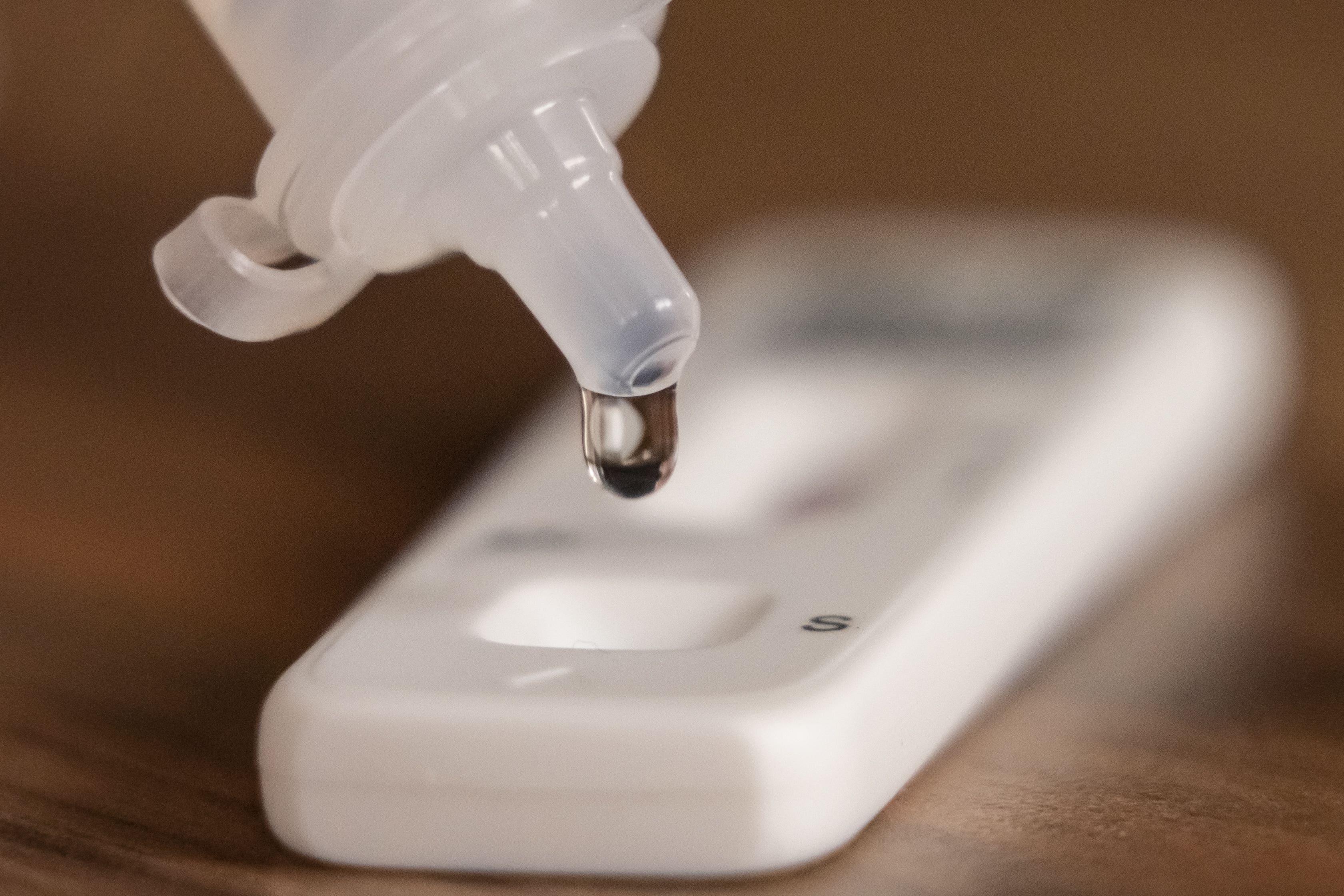UK Covid levels fall for first time since start of September, new data shows
The total number of people in private households in the UK testing positive for coronavirus stood at 1.87 million in the week to October 24.

Your support helps us to tell the story
From reproductive rights to climate change to Big Tech, The Independent is on the ground when the story is developing. Whether it's investigating the financials of Elon Musk's pro-Trump PAC or producing our latest documentary, 'The A Word', which shines a light on the American women fighting for reproductive rights, we know how important it is to parse out the facts from the messaging.
At such a critical moment in US history, we need reporters on the ground. Your donation allows us to keep sending journalists to speak to both sides of the story.
The Independent is trusted by Americans across the entire political spectrum. And unlike many other quality news outlets, we choose not to lock Americans out of our reporting and analysis with paywalls. We believe quality journalism should be available to everyone, paid for by those who can afford it.
Your support makes all the difference.Total Covid-19 infections in the UK have dropped for the first time since the start of September, though levels are continuing to rise in Northern Ireland, new data shows.
Covid-19 infections have fallen in England and Wales while the trend is uncertain in Scotland, the Office for National Statistics (ONS) has said.
The total number of people in private households in the UK testing positive for coronavirus stood at 1.87 million in the week to October 24, down 8% on 2.05 million in the previous week.
This is the first drop in UK infection levels since the seven days to September 5.
In England, the number of people testing positive for coronavirus in the week to October 24 was 1.59 million, or around one in 35 people, down from 1.75 million the previous week, the equivalent of one in 30.
In Wales, levels fell for the second week in a row from 86,100 in the seven days to October 17 to 77,500 in the week to October 24.
Scotland also saw levels drop, with 141,400 people likely to have Covid-19, the equivalent of one in 35, down from 159,200, but the ONS said the trend was uncertain.
Northern Ireland has seen its second increase in two weeks, where the latest estimate for infections is 61,200, or one in 30 people, up from 53,700, or one in 35.
A number of Omicron variants have been circulating in the UK since the summer, including the two that have now been named as BQ.1 and XBB.
These are being monitored for their potential to spread rapidly, but have not been designated variants of concern, the UK Health Security Agency (UKHSA) said.
BQ.1 is being monitored because of its “rapid growth”, while XBB is thought to be a factor in the recent spike in Covid-19 cases in Singapore, the UKHSA said.
Infection rates in England are highest among those aged 70 and over, with 3.8% likely to have had Covid-19 in the week to October 24, or around one in 25.
The percentage of people testing positive for coronavirus in England also increased in those aged two years to school Year 6, the ONS said.
But levels fell in those in school Year 12 to aged 24 years and people aged 50 to 69 years.
Infections fell in the North East, the North West, Yorkshire and the Humber, the West Midlands, and the East of England, but the trend was uncertain in the East Midlands, London, the South East and the South West.
The ONS infection survey is the most reliable measure of the prevalence of coronavirus and is based on a sample of swab tests from households across the UK.
But there is a lag in the reporting of the data, due to the time it takes for the survey to be compiled.
UKHSA figures show that the Covid hospital admission rate fell to 7.78 per 100,000 population in the week to October 30 from 9.82 in the previous week.
Hospital admission rates for Covid-19 were highest in the North East at 11.49 per 100,000 population, the agency added.
Dr Mary Ramsay, director of public health programmes at the UKHSA, said: “The continued success of the vaccination programme means that Covid-19 cases and hospitalisation rates are still falling across the UK.
“This is excellent news, but we need to make sure that we remain protected through the winter. We are urging everyone to come forward and take up all the vaccine doses for which they are eligible as soon as possible.”